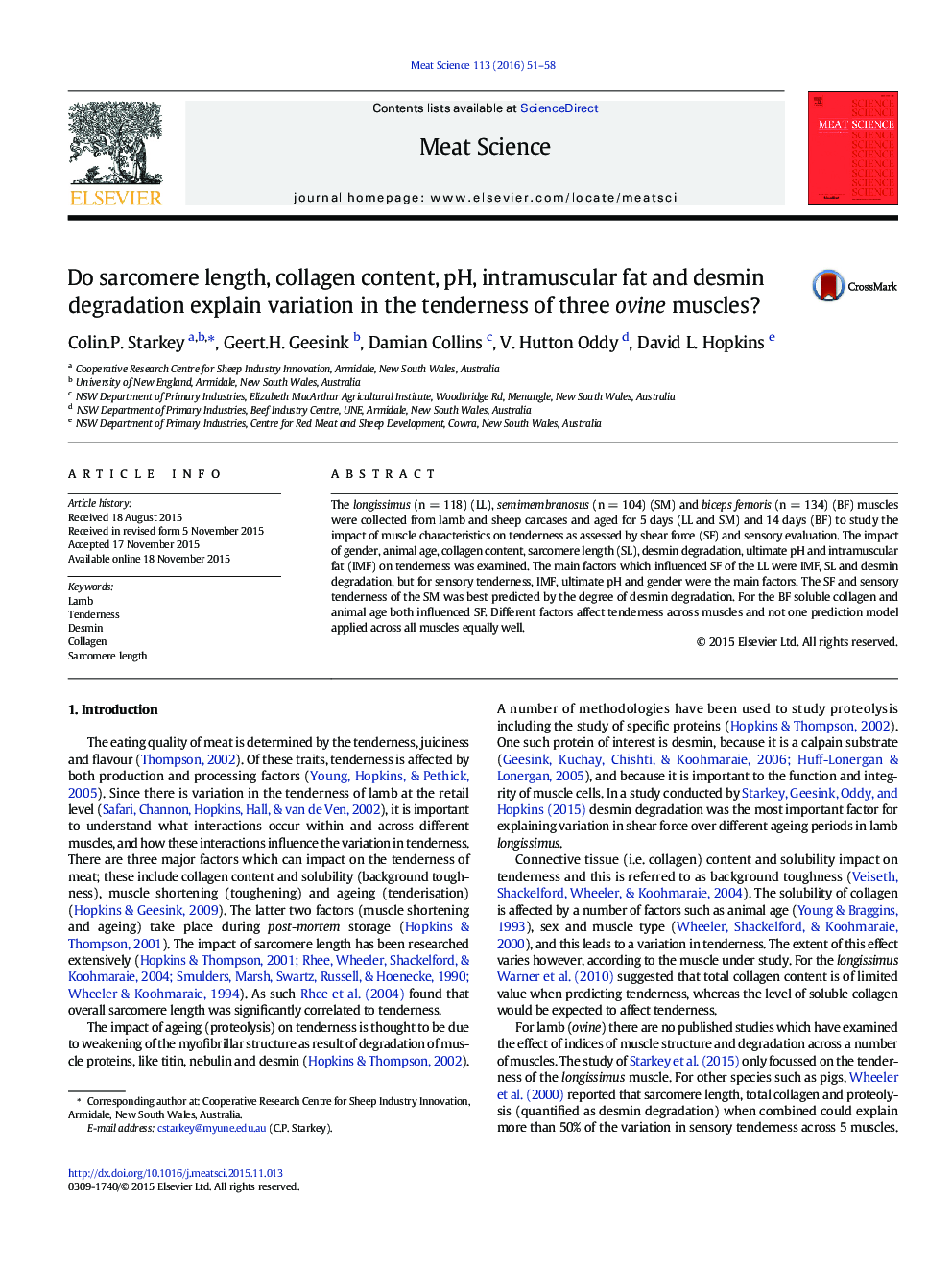| Article ID | Journal | Published Year | Pages | File Type |
|---|---|---|---|---|
| 2449628 | Meat Science | 2016 | 8 Pages |
•IMF, proteolysis and sarcomere length influence shear force of the longissimus.•Sensory tenderness of the longissimus was impacted by intramuscular fat, pH and sex.•For the semimembranosus only proteolysis affected shear force.•For the semimembranosus only proteolysis influenced sensory tenderness.•For the biceps femoris collagen solubility and animal age influenced shear force.
The longissimus (n = 118) (LL), semimembranosus (n = 104) (SM) and biceps femoris (n = 134) (BF) muscles were collected from lamb and sheep carcases and aged for 5 days (LL and SM) and 14 days (BF) to study the impact of muscle characteristics on tenderness as assessed by shear force (SF) and sensory evaluation. The impact of gender, animal age, collagen content, sarcomere length (SL), desmin degradation, ultimate pH and intramuscular fat (IMF) on tenderness was examined. The main factors which influenced SF of the LL were IMF, SL and desmin degradation, but for sensory tenderness, IMF, ultimate pH and gender were the main factors. The SF and sensory tenderness of the SM was best predicted by the degree of desmin degradation. For the BF soluble collagen and animal age both influenced SF. Different factors affect tenderness across muscles and not one prediction model applied across all muscles equally well.
